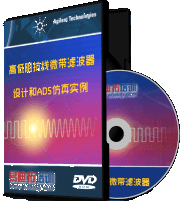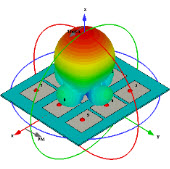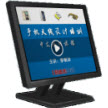CST如何给两根电线之间加10A的电流
用离散端口,选择电流,右边就可以设置电流大小,然后给你用的电线溃电就行了。
是的撒,离散端口可以设置电压、电流
MWS工作室可也这么做
如果是低频工作室就是使用current path
有一点必须注意,这个我们与张敏老师确论过的,离散端口的S11不准确,如果需要这个参量,请慎用。如果不是,没有什么问题。
多谢啦,只是“电线溃电”是什么意思啊
是低频,1000Hz,请问如何设置current path, 应该用excitation signal?还是discrete port?
谢啦
请问为什么S11不准确?那我要用其它输出端口吗?
我们曾多次在工作场合就此问题与张敏博士交流过,他说是算法本身的问题,我也只能这样回复你。
current path(from curve) 是在指定曲线上加源,excitation signal是指定源的类型,二者有区别
新手求助:一个线圈如何使两端闭合,并且在之间外加10A的电流,急需,请各位高手指点迷津,谢谢啦。
画线圈有专门的方法,就是用Solve ——Current Coil from Curves…
详见低频工作室的example:Magnetostatic Force Tutorial
小编你需要先了解CST软件的最基本仿真原理,Microwave Studio和Electromagnetic Studio是两个不同的工作室,仿真原理不同,不能混为一谈。
Current Path是EMS的激励源的形式之一,具体内容请参考CST EMS帮助文件"Excitation Sources"的相关章节。
Discrete Port是MWS中的Excitation Sources之一,请参考CST MWS帮助文件《Discrete Port Overview》。
我不知道你所说的"Excitation Signal"是指什么,MWS中的"Excitation Signal"指得是激励信号,请参考CST MWS帮助文件《Excitation Signal》。
CST MWS帮助文件《Discrete Port Overview》里这样说:
However, due to the transmission between transmission lines of different geometric dimensions, reflections may occur that are much larger than those for the termination with waveguide ports.
这应该就是所谓“离散端口不如波导端口准确”的官方支持论据了。
我想说,这样的说法既不严谨,也有很高的误导性。
以CST的官方说法,帮助文件《Discrete Port Overview》说:
Discrete ports are mainly used to simulate lumped element sources inside the calculation domain. These ports are a good approximation for the source in the feeding point of antennas when calculating farfields. In some cases, these ports may also be used to terminate coaxial cables or microstrip lines.
如果单看这段文字的话,既然适合做天线远场计算,而远场数据又是从近场数据换算的,那很武断地说“离散端口的S11不准确”是不是不够严谨?
《Discrete Port Overview》里又有:
For lower frequencies (compared to the dimension of the discrete port), these reflections may be sufficiently small, such that these kinds of ports may also be used successfully for the S-parameter calculations of multipin connectors.
这个正是我正在做的仿真,和实测的吻合度非常高,没有“不准确”一说。
不好意思,打错字了反馈的“馈”,恩就是hefang老大说的那个意思。
相关文章:
- 新人能否仿真200k的线圈电流所产生的磁场分布 (05-08)
- CST MWS中如何将表面电流的数据文件导出来? (05-08)
- 为什么电流分布显示不出来 (05-08)
- CST EMS仿真平面螺旋线圈电流怎么加? (05-08)
- 怎样加一个非稳恒电流。 (05-08)
- CST中如和将动态电流分布导出? (05-08)











